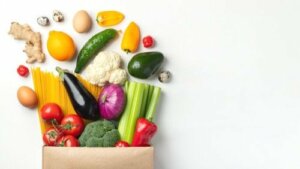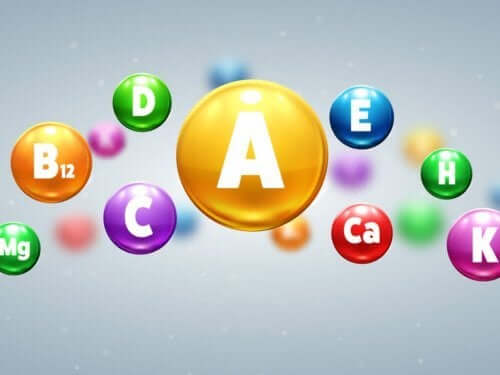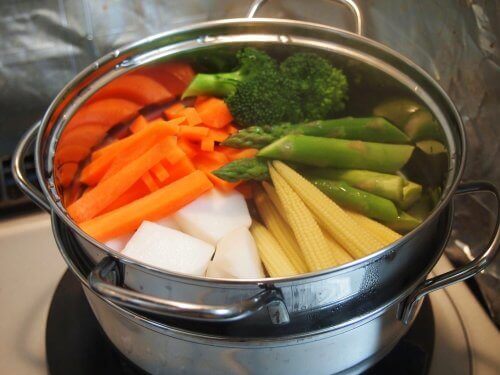Preserving Vitamins: Everything You Need to Know

Preserving vitamins in our food is important, and the way vitamins are preserved in foods can be affected by different elements. Each group of vitamins is susceptible to one or more factors, whether they’re water-soluble or fat-soluble. We have to know the processes that can affect the preservation of these nutrients to avoid losses and, with it, the loss of their nutritional value.
Keep in mind that most vitamins are essential micronutrients, and it’s necessary to respect the recommended daily intake of vitamins through a healthy diet. Otherwise, we increase the risk of developing medium and long-term pathologies that may put our health at risk.
Vitamin source

- Red: the color is due to the content of vitamin C and beta-carotene. Red foods act as antioxidants, according to research published in the British Journal of Pharmacology. In this group we can find strawberries, raspberries, cherries, blueberries, red peppers, or tomatoes.
- Orange and yellow: are a source of vitamins A and C, which help strengthen the immune system and lower blood pressure. This group includes foods such as oranges, limes, lemons, carrots, papayas, or even yellow peppers.
- Green: these are foods rich in folic acid (B9) and vitamin K. They help strengthen the immune system and keep skin and hair healthy. In this category we can find all the green leafy vegetables and fruits like kiwi, grapes, or avocados.
- Blue-purple: they have a high content of polyphenols. Purple vegetables and fruits help slow down aging and protect memory and urinary tract function.
Properly preserving vitamins
Preserving vitamins is important since we must protect their antioxidant properties and hormonal function. Some of them are even converted into coenzymes and help the enzymes to perform their catalytic function.
Raw food is rich in vitamins; this is when we benefit from the highest dose of this nutrient. However, many of the vitamins are lost when we cook them.
Although some vitamins are more resistant than others, there are some tricks that make it easier to preserve the vitamins:
1. Steam cooking
During this process, vegetables are cooked at a temperature of 100º C (212º F), so it’s better suited to preserve the vitamins. Especially if we compare it with the heat that oils and ovens reach.
2. Prepare vegetables with little water
Water carries away water-soluble vitamins, such as vitamins B and C. Therefore, it’s advisable to use the minimum amount of water to preserve as many minerals and vitamins as possible.
3. Keep food in closed containers
The containers you use to keep food are very important to food preservation as well. When these vitamins come into contact with oxygen, the air deteriorates vitamins, especially biotin and vitamins C, D and E.
4. Use opaque glass containers for the conservation of vitamins
We recommend using opaque glass containers because some vitamins are sensitive to light. It’s always better to opt for glass containers rather than plastic ones. This recommendation is especially important when dealing with oils.
According to current scientific literature, vitamin D is especially sensitive to oxidation when it comes into contact with sunlight. For this reason, it’s important to store food in a cool, dry and dark place.
Also read: 7 Foods You Should Never Store in Plastic
5. Cut food into large pieces
Cutting into large pieces helps make the surface of fruits and vegetables less exposed to air. This way, you avoid the oxidation of the food.
Recommendations to avoid vitamin loss

Keep reading to find some recommendations we find important when trying to preserve vitamins in food.
Keep vegetables and fruits in a fresh place and protected from light. Also, clean and cut up the vegetables when you serve them. As for cooking techniques, it’s better to use papillote, steam or oven. These are the cooking techniques that best preserve and/or concentrate the vitamins in the food.
On the other hand, to avoid oxidation of foods such as apples, once cut: you can sprinkle a little lemon juice on them. Eating raw fruits and vegetables is very advisable and it’s a good idea to do so with the fruit and vegetable’s natural peel, whenever possible.
The highest concentration of vitamins is found underneath the peels. In addition, cellular protectors are found in the peels themselves. If you make a juice or a fruit shake that you aren’t going to drink immediately, keep it in a closed container to avoid oxidation.
When you cook vegetables, keep the liquid, since part of the vitamins remain in it. Make the most of the water you used to cook by making a soup or a stew, or use it to cook pasta, rice, or vegetables
Pay special attention to preserving vitamins to avoid their deterioration
Raw food is rich in vitamins; however, the vitamin content can be lost or altered. The three most important factors that we must consider for the conservation of the vitamins are temperature, light and oxidation.
All cited sources were thoroughly reviewed by our team to ensure their quality, reliability, currency, and validity. The bibliography of this article was considered reliable and of academic or scientific accuracy.
- Milani A., Basirnejad M., Shahbazi S., Bolhassani A., Carotenoids: biochemistry, pharmacology and treatment. Br J Pharmacol, 2017. 174 (11): 1290-1324.
- Pedersen JN., Frislev HS., Pedersen JS., Otzen DE., Using protein fatty acid complexes to improve vitamin D stability. J Dairy Sci, 2016. 99 (10): 7755-7767.
This text is provided for informational purposes only and does not replace consultation with a professional. If in doubt, consult your specialist.








